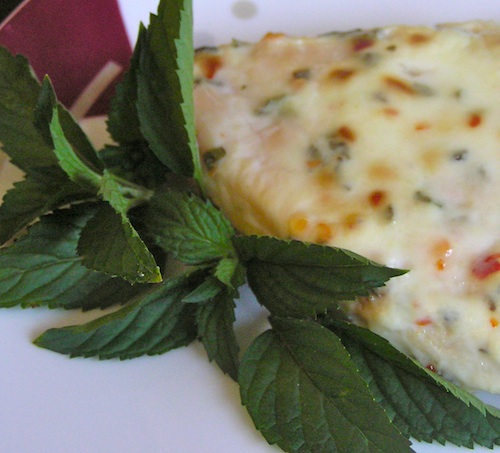Sudhir Seth (middle) was 20 years old and already cooking in an international hotel kitchen when he used his first grill in India.
"It was nothing like an American grill," recalls the chef and owner of the Passage to India restaurant in Bethesda, Maryland. "It was a sigri, " a hibachi-size, open-flame contraption. "I will never forget it, because I killed and grilled my first lobster on it," he says.
Backyard grilling is rare in India, Seth says, but many Indian dishes are a natural for the barbecue. When he and his wife, Sonali, arrived in Bowie, Maryland 11 years ago they embraced American tradition and took up the grill.
Grilling in India is most commonly associated with tandoori cooking, yet most Indian home cooks don't own tandoors, the high-temperature ovens used to cook meat,vegetables and breads. Seth says that at home, people would use sigris or flat griddles or coal-burning stoves. Communal tandoors were common in rural areas; women would prepare bread dough at home and gather around to use the common tandoor for baking. Sigris were common with some upper-class families in the country and would be used to grill small game such as rabbits and pigeons.
Generally, people preferred — and still do — to eat "tandoori-style foods" at restaurants, says Seth. "My parents were not big meat eaters, so we never grilled meats," he said. "As for roasting vegetables, my mother would roast eggplants on hot ashes that fell from our coal-powered stove."

Seth is convinced that tenderizing and good marinating are the keys to grilling meats. At the restaurant, where he has a classic tandoor, he uses raw papaya, yogurt, a paste of ginger and garlic and even vinegar — never a synthetic meat tenderizer — a practice that he advocates for the home cook.
"My marinades are simple. I love using spices, fresh herbsand seasonal ingrediens,he says. "My marinades don't use a lot of oil and so are healthier.
He also does not grill large pieces of meat but rather concentrates on the Indian cheese called paneer, vegetables, fruits, seafood and poultry. His inspiration comes from all over his native country.
"I have worked in the northern and the southern parts of India and have adapted regional Indian recipes for both my restaurant and my home grill," says the chef who has served Indian dishes to former president Bill Clinton on several occasions.
Seth prefers to cook with charcoal, but the grilling method is up for debate. Seth and his wife disagree passionately on which fuel is better.
She likes the easy cleanup of gas. "I also dislike the bags of charcoal on the porch when we entertain," Sonali says.
He defends charcoal: "As foods grill, the juices drop on the charcoal and the flames carry wonderful flavors back into whatever you are grilling."
The dialogue goes on, as it does among so many grilling families.
"If it's charcoal," jokes Sonali, "then he cooks and he cleans. So I win!" After all, she says, "The whole idea behind marrying a chef is so you don't have to cook."
(This article first appeared in the Washington Post)
Roasted Eggplant and Tomato Dip
Makes about 2 cups
This adapted recipe is a summertime favorite of Seth's. He serves it with warm French bread for dipping.
1 large eggplant (1 to 1 1/2 pounds)
4 tablespoons vegetable or canola oil
3 fresh garlic cloves, minced
1 medium tomato, finely chopped (about 1/2 cup)
1/2 teaspoon salt, or to taste
1/2 cup fresh cilantro leaves
1-inch piece fresh ginger, peeled and coarsely chopped
Juice from 1 lemon
1 jalapeño pepper, stemmed and split (remove seeds for a milder flavor)
1/2 cup plain whole-milk yogurt
Prepare the grill for cooking over direct heat.
Clean the grate with a grill brush.
Brush the eggplant all over with 2 tablespoons of the oil. Using a knife, pierce the eggplant a few times.
Place the eggplant directly on the grill. Cook, turning occasionally, until the eggplant is soft and its skin is charred, 15 to 18 minutes. Remove from the grill and let cool. Discard the skin.
Using a fork, mash the eggplant flesh into a smooth pulp.
In a large skillet over medium heat, heat the remaining 2 tablespoons of oil, about 2 minutes. Add the garlic and saute for 30 seconds, then add the tomato and cook, about 5 minutes. Use he back of a spatula to mash the tomato, stirring continuously. When the mixture is ready, oil will start to appear around the inside edges of the skillet.
Add the eggplant and salt to taste. Mix well, and stir while cooking, about 7 minutes. Remove from heat and let cool.
In a food processor or blender, puree the cooled eggplant-tomato mixture with the cilantro, ginger, lemon juice, jalapeño pepper and yogurt until smooth. (You may add a few tablespoons of water, a little at a time, to aid the mixing process if necessary.)
Per serving: 101 calories, 2 g protein, 8 g carbohydrates, 8 gfat, 2 mg cholesterol, 1 g saturated fat, 47 mg sodium, 2 g dietary fiber
Tandoori Phal (Grilled Fruits)
4 servings
Seth suggests using hard fruits because they work well on the grill. Figs and other soft fruits will fall apart on high heat, so cook them over indirect heat. A grill basket is necessary here to prevent the fruit from falling into the grill.
1 tablespoon honey
1 1/2 teaspoons grated fresh ginger root
2 tablespoons (from 1 lemon) fresh lemon juice
1 cup orange juice
Pinch of ground cardamom
Pinch of freshly ground black pepper
4 fresh figs, cut in half (may substitute other fruit such as mango)
1 cup fresh pineapple chunks (about 1/8 o
f
a whole pineapple)
1 cup pitted dates, such as Medjool
In a small bowl, combine the honey, ginger, lemon and orange juices, cardamom and black pepper.
Place the figs, pineapple and dates in a large bowl and pour the marinade over them, tossing lightly to coat. Let stand at room temperature for at least 30 minutes or up to 3 hours in the refrigerator.
When ready to cook the fruit, prepare the grill for indirect cooking. If it is a charcoal grill, build the fire on one side. If it's a gas grill, turn all the burners to preheat and then turn off one burner just before you begin cooking.
Clean the grate with a grill brush.
Drain the fruit, reserving the marinade in the bowl, and place in the grill basket on the side of the grill that does not have the fire. Cook for 8 to 12 minutes, turning occasionally, until the fruit is caramelized but not burnt.
While the fruits are grilling, prepare the sauce. In a small pan over medium heat on the stove, heat the reserved marinade until just heated through and the sauce comes to a simmer. Remove from heat.
Divide the fruit among individual bowls and pour the sauce on top. Serve with ice cream. Per serving: 246 calories, 2 g protein, 64 g carbohydrates, 1 g fat,




Love the recipes, I know I will be making them. Actually, I have chicken marinating in yogourt w/spices, ginger, garlic and lime juice right now, ready to hop onto skewers and the BBQ. I find Indian food really takes off the grill, so it’s so surprising to learn people don’t cook that way at home in India…
It was interesting to note the difference in opinion over charcoal vs gas. We have been using charcoal for the past few years, and are ready to convert to a gas grill, primarily for the convenience of it. Do you konw if the new gas grills with infrared heating, like the charbroil brand, do a better job than a regular gas grill?